Dear Friends and Family,
And so we reach one of the greatest national parks I have seen on this trip, and have seen ever, as a matter of fact.
But first, a quick update: sorry for the delays! I’ve covered something like 3000 miles in just the last week of traveling and only just returned to Michigan and a stable internet connection. I decided to come back to Michigan early for a get together with some folks from my high school, but the trip is not over yet! I will be traveling up to the Upper Peninsula and elsewhere over the next several weeks, before finally returning home to DC. And I have access to a real computer now! A real, heavy, whirring, desktop computer, and so I should be able to crank out some more updates over the next couple of days.
Also, that’s big news: I’ve decided to return home early! I miss you all too much to stay away from DC until October. And this trip has cost me much more than expected (thanks to all the car stuff :/ ), so I’m now returning shortly after Labor Day. I can’t wait to be back and I’m really looking forward to seeing you all again 💙
Alright, back to the travels:
So during and after getting my car fixed, I was finally able to enjoy the incredible sights and wildlife of Glacier National Park:
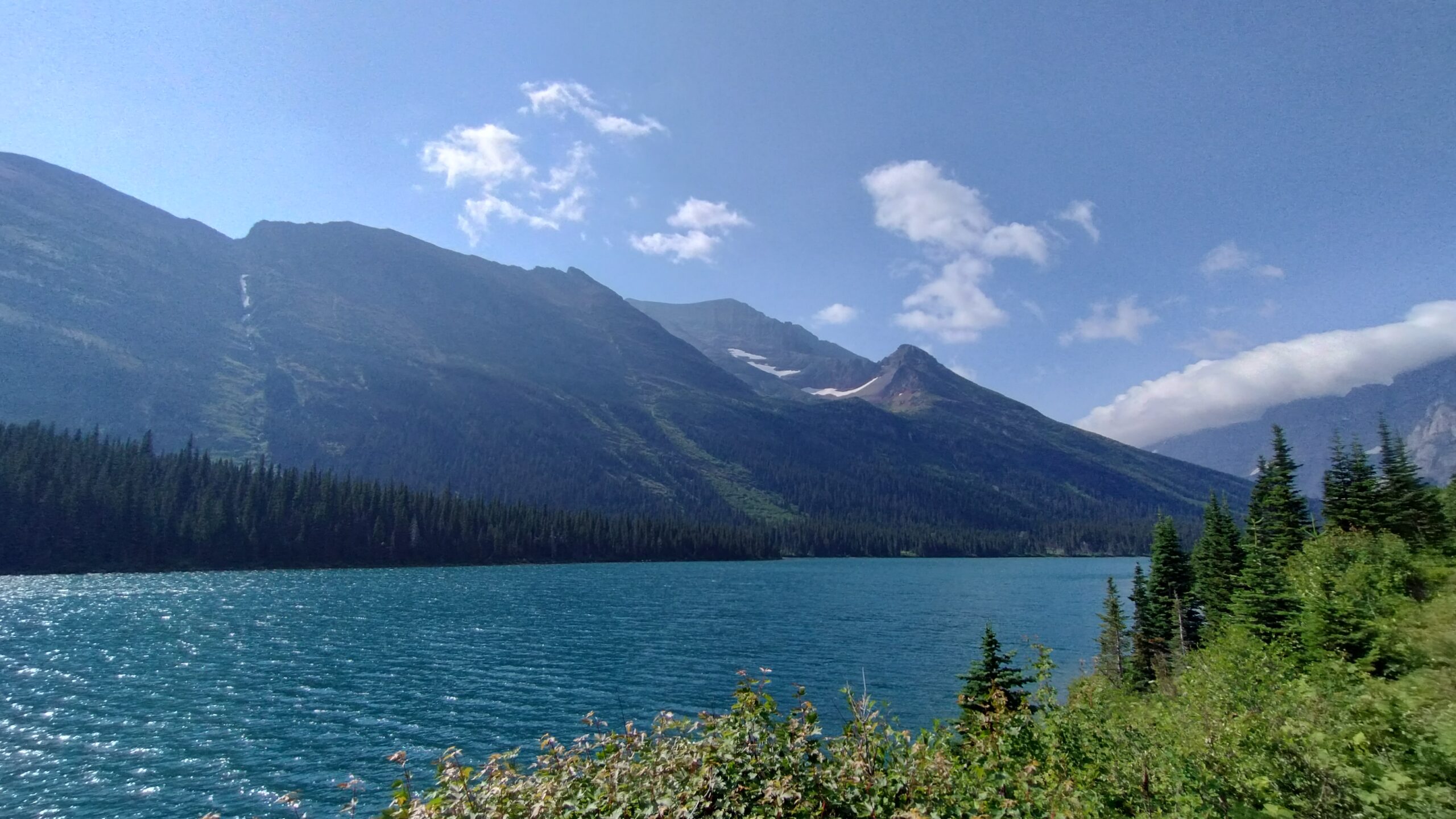
Guys, you can’t comprehend how much I was looking forward to this part of the trip. When I did my 2020 road trip, I wasn’t able to reach Glacier due to a lack of time and due to the closure of the Blackfoot Reservation to the east. It was a huge hole in my road trip and the one park I regretted not seeing during my time in the west. It’s honestly the foundational reason I started to plan this road trip, which I actually started thinking about before the 2020 road trip had even ended! So, needless to say, getting to this park has been on my mind for a long, long time.
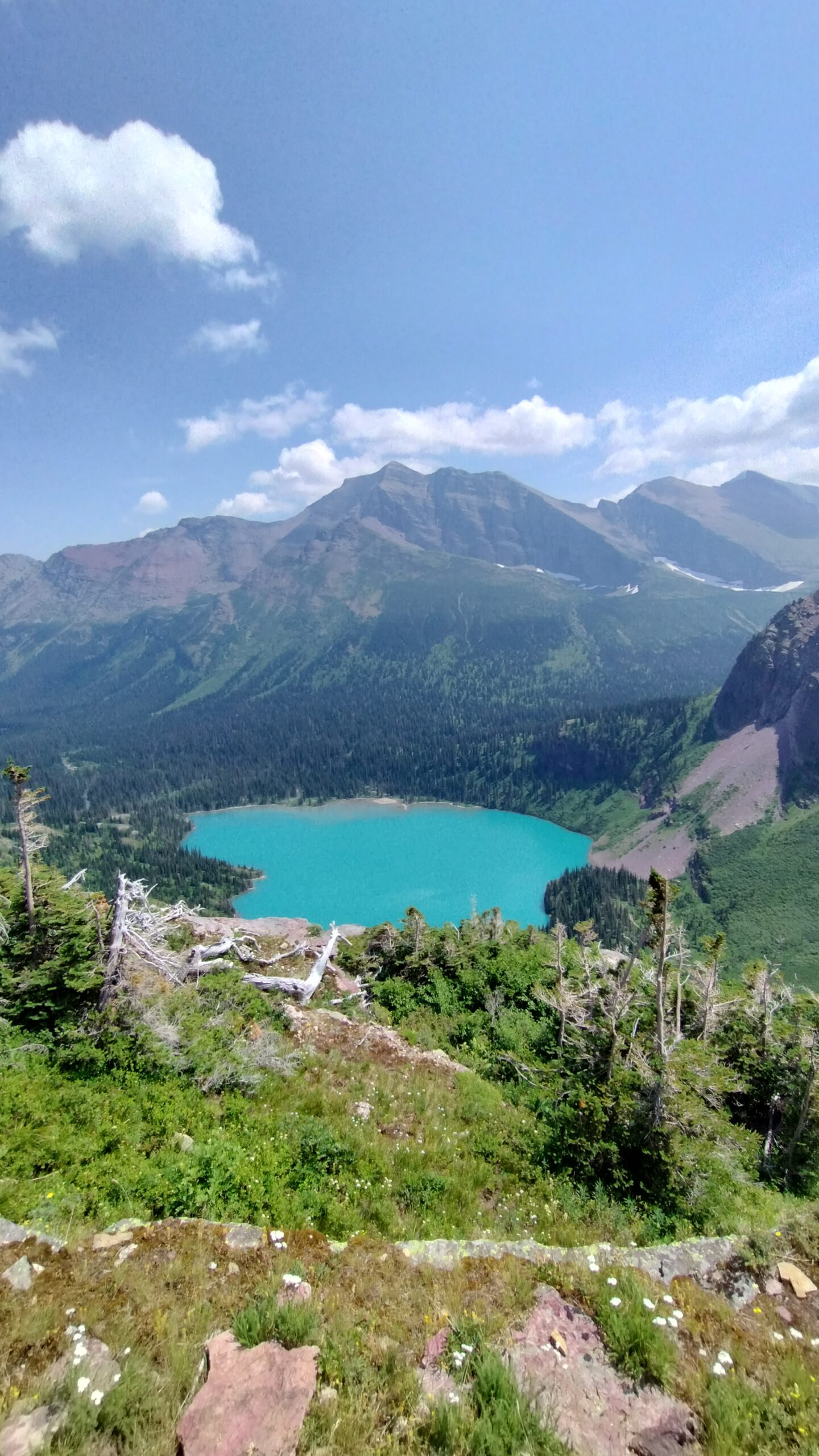
And I finally freaking made it.
Glacier is a large National Park abutting the Canadian Border (Waterton Lakes National Park extends its’ size into Canada) in the northwestern corner of Montana. It is famously known as the “crown of the continent” due to the intersection of wildlife, biomes, and drainages from all across North America uniting in one location.
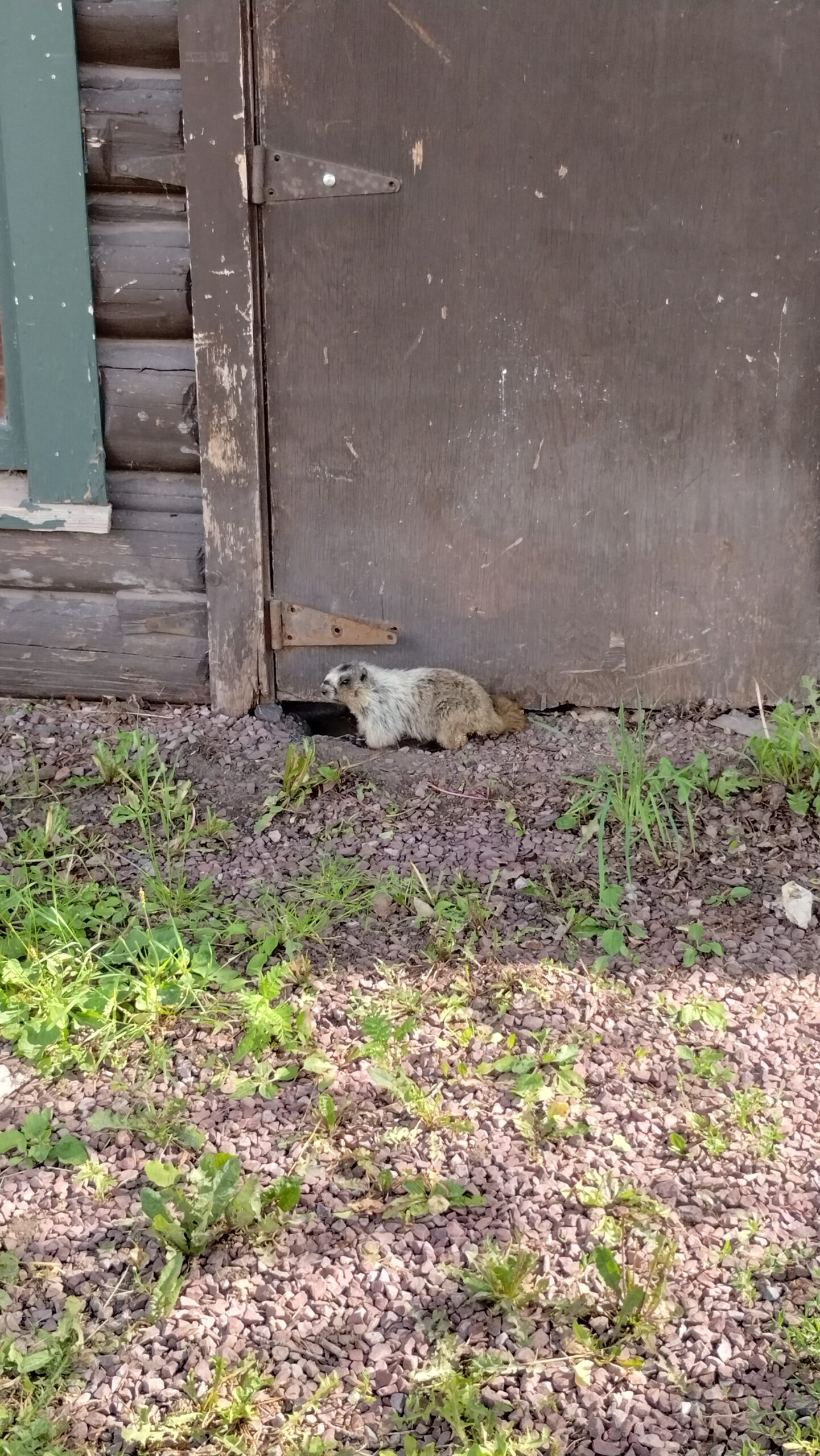
Like this marmot, who was sleeping under the hostel I stayed at east of the park. I wonder if burrows are cheaper than bunks, but I don’t wonder about it too much.
The park itself is divided into five main areas:
- Going-to-the-Sun Corridor: the only road crossing the park east to west, the most famous area.
- Many Glacier: the northeast part of the park, having the greastest number of glaciers and bears in the entire park.
- North Fork: the northwest corner, has some cool lakes and some dirt roads that probably helped do in my coolant pipe on my car.
- Two Medicine: the southwest corner, I didn’t go there.
- Cut Bank: the southeast corner, I didn’t make it there either.
Every location requires daily vehicle tickets that are extremely difficult to get and which I had to book way back in March in some cases. Thus, the first area of the park I could get into after driving across Going-to-the-Sun Road (that’s where those murky, foggy pictures in the last entry came from, and precluded my hiking there at the time) was Many Glacier:
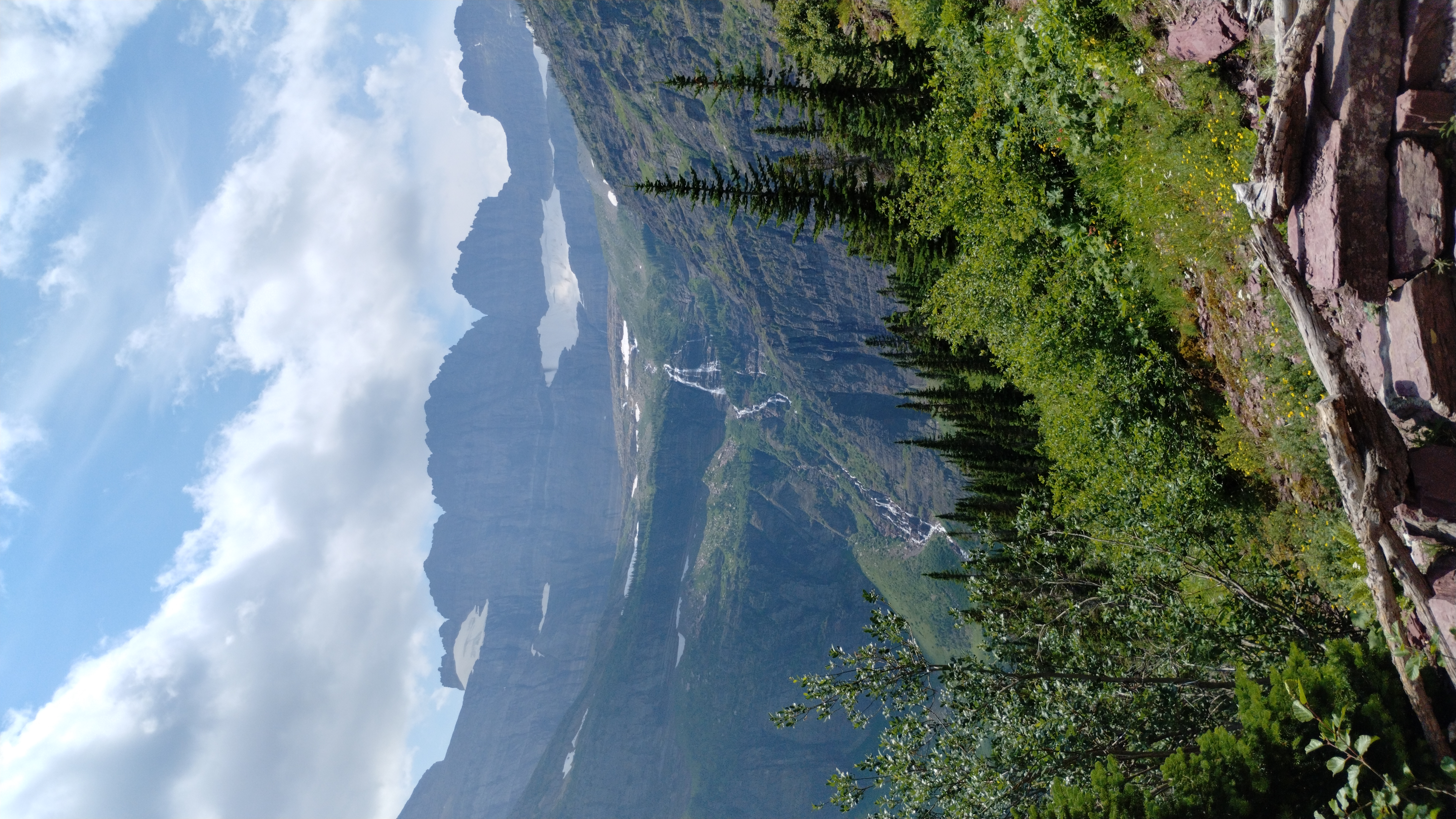
Gem Glacier is in the upper left of the photo, on the ridge, while Salamander Glacier is in the upper right, just below the ridge.
It blew me away. Miles and miles away:
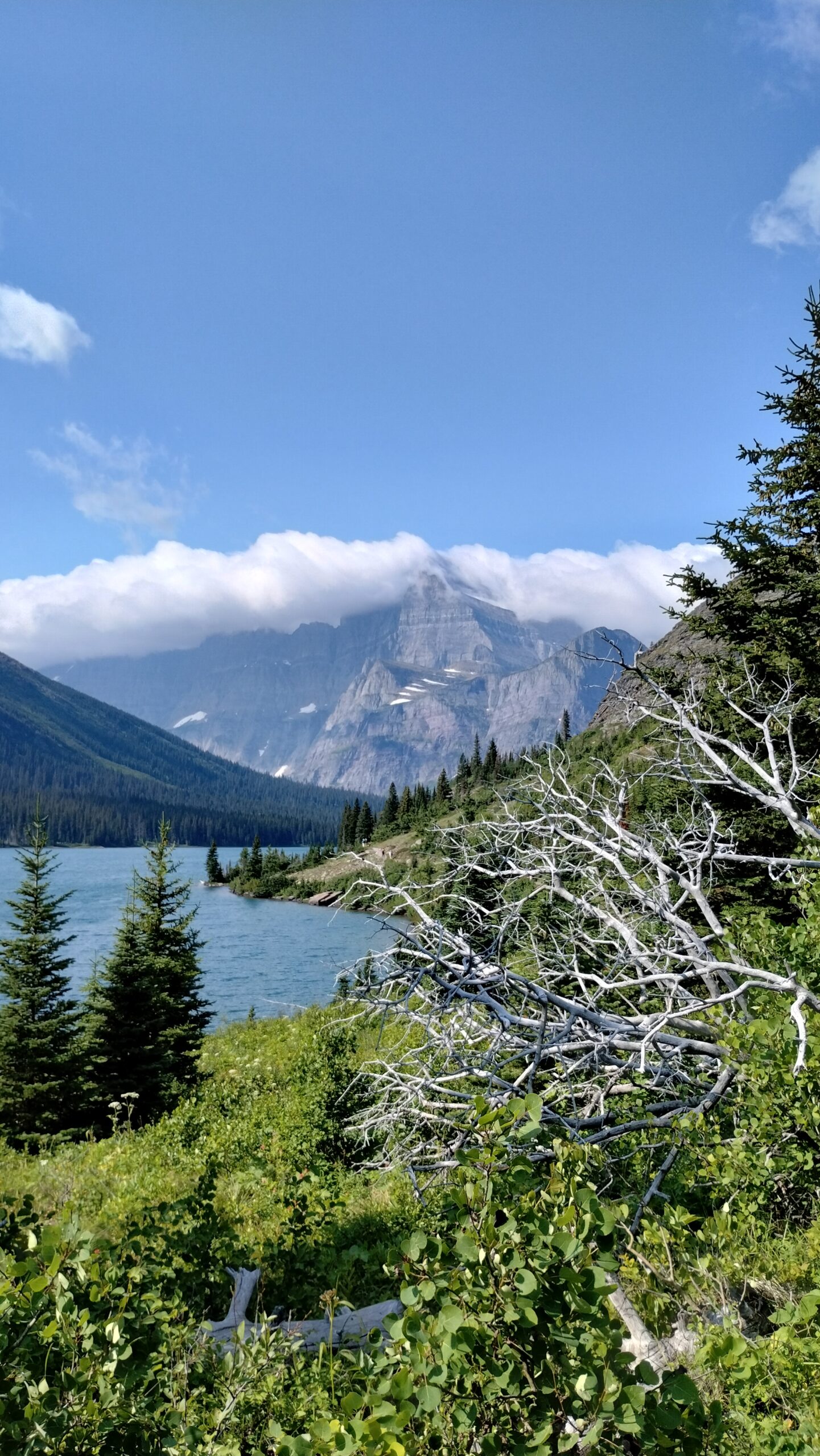
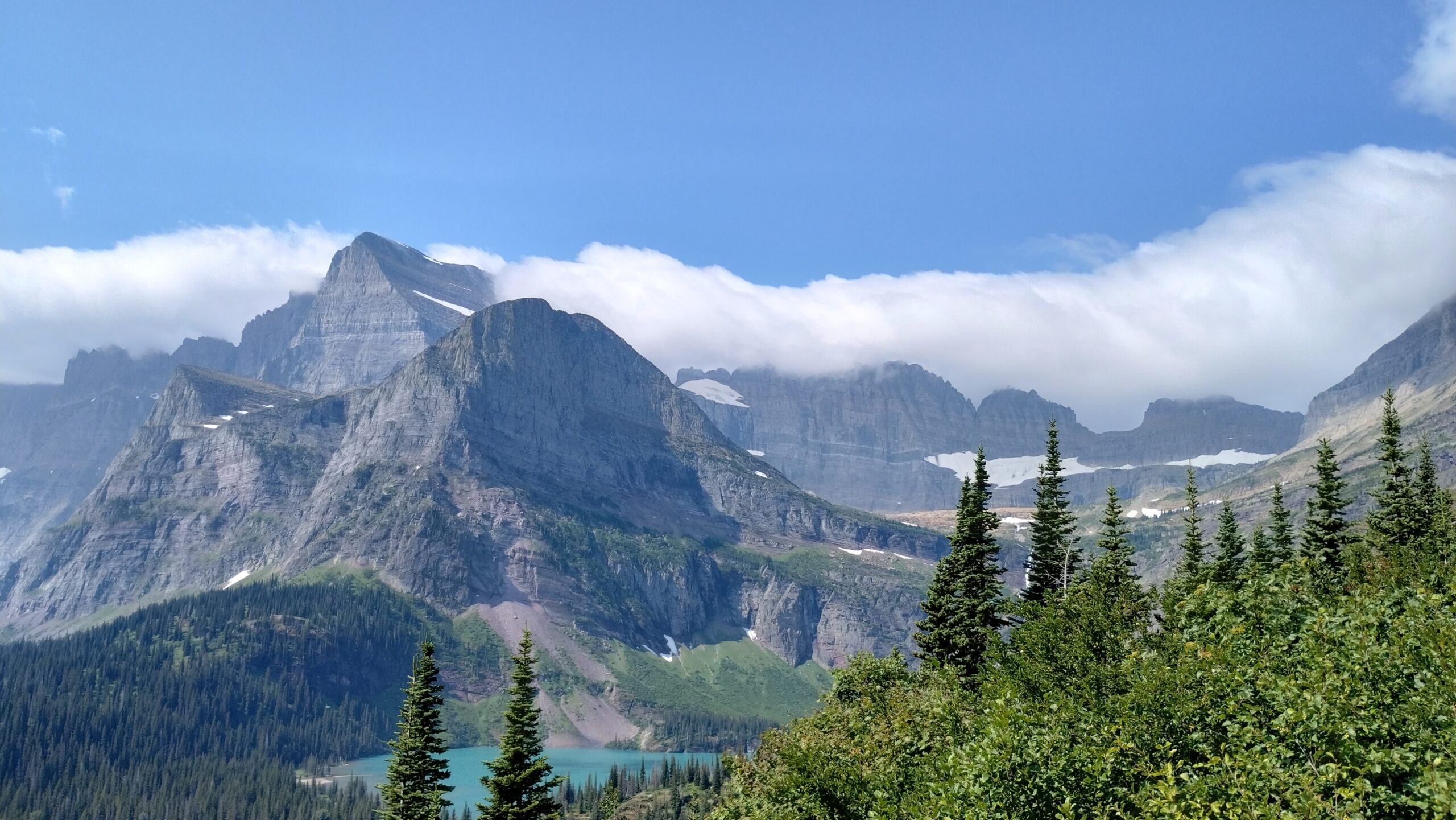
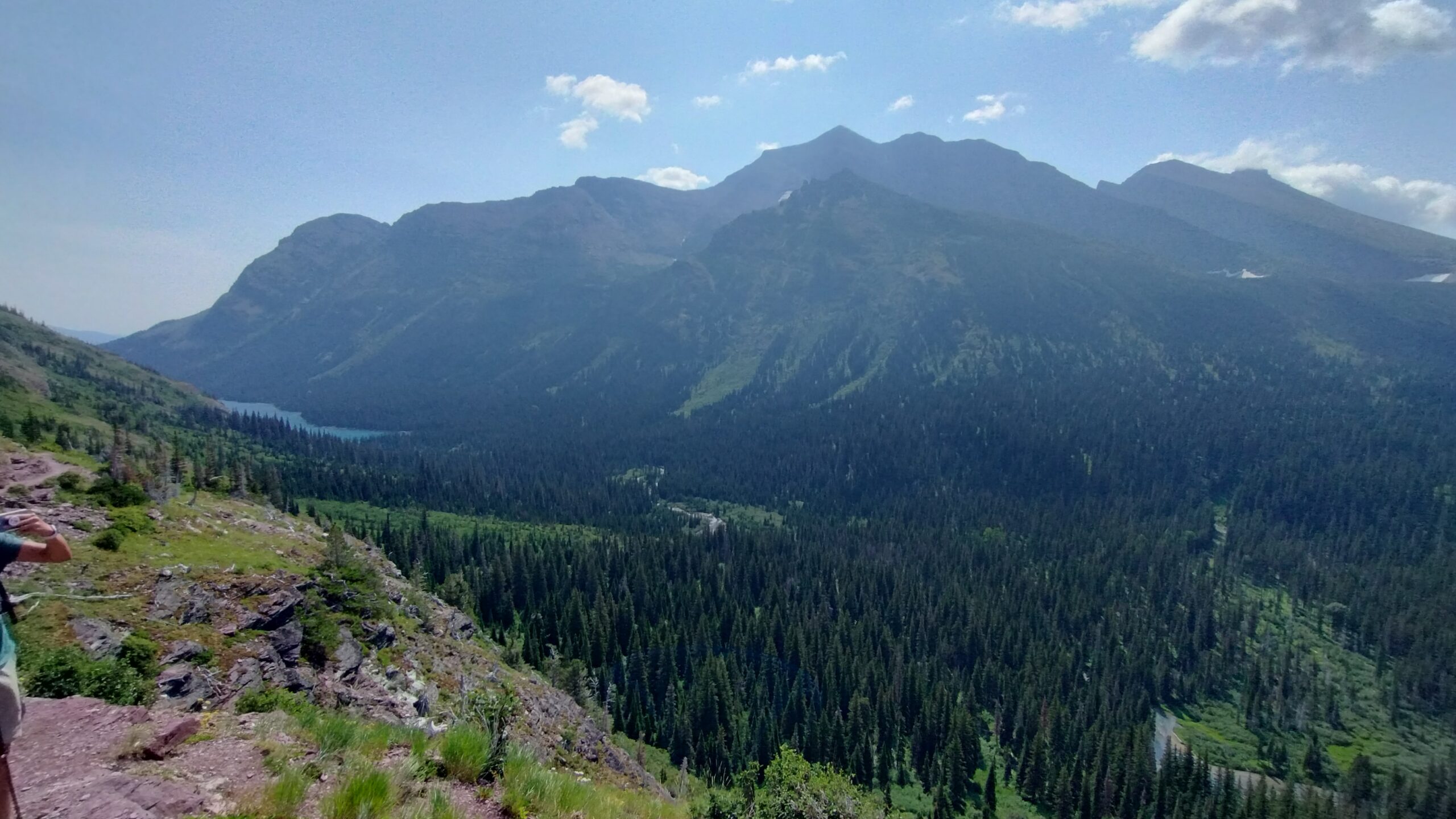
All of these photos thus far are from a single day, and a single hike: the trail to Grinnell Glacier in Upper Grinnell Lake. The trail was a bit over 10 miles and worth every step:
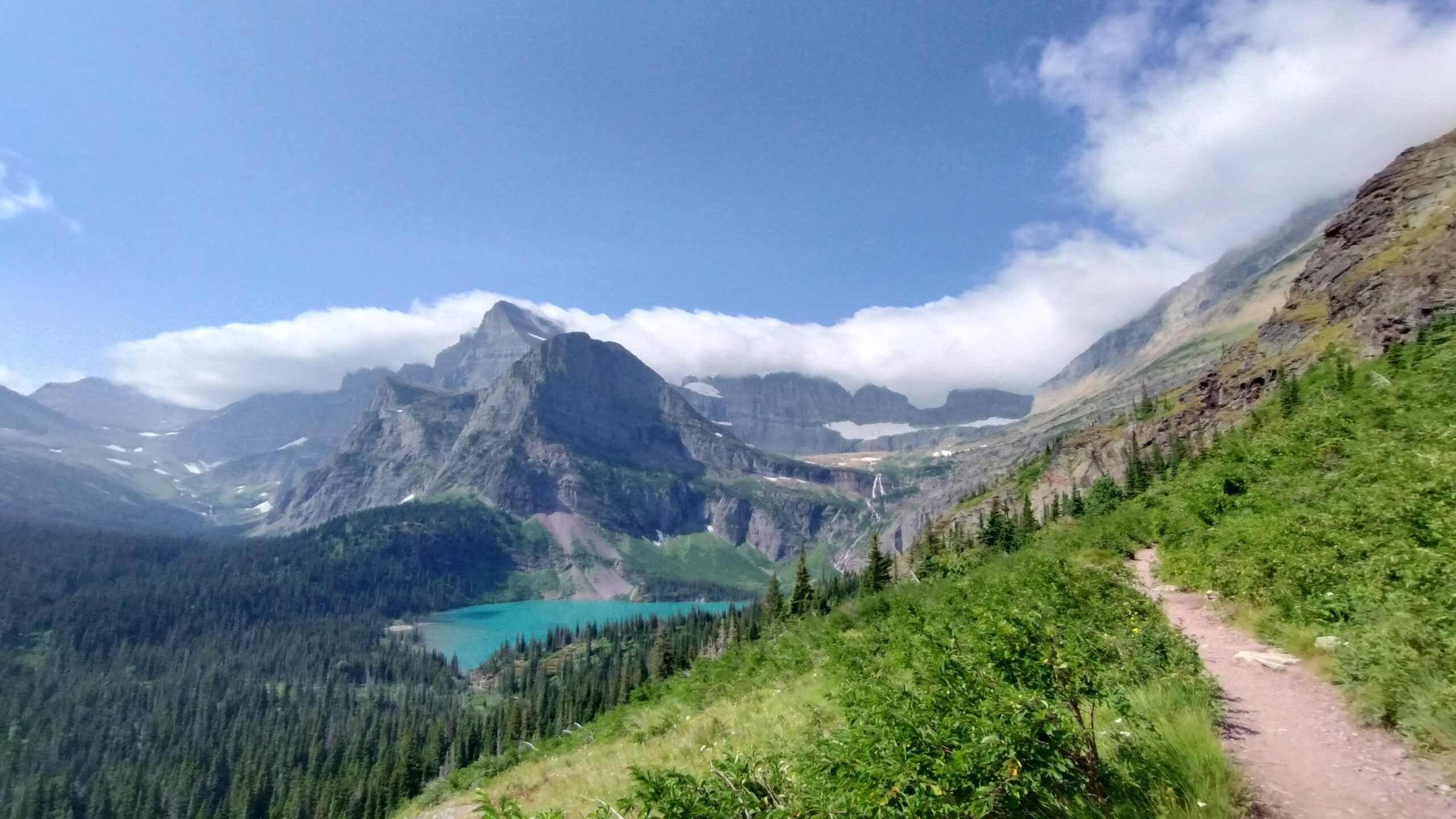
The skies were blue, and due to the height of the mountains, the clouds just roil endlessly over the peaks and mystifying into the skies east of the continental divide (which runs up the spine of the entire park).
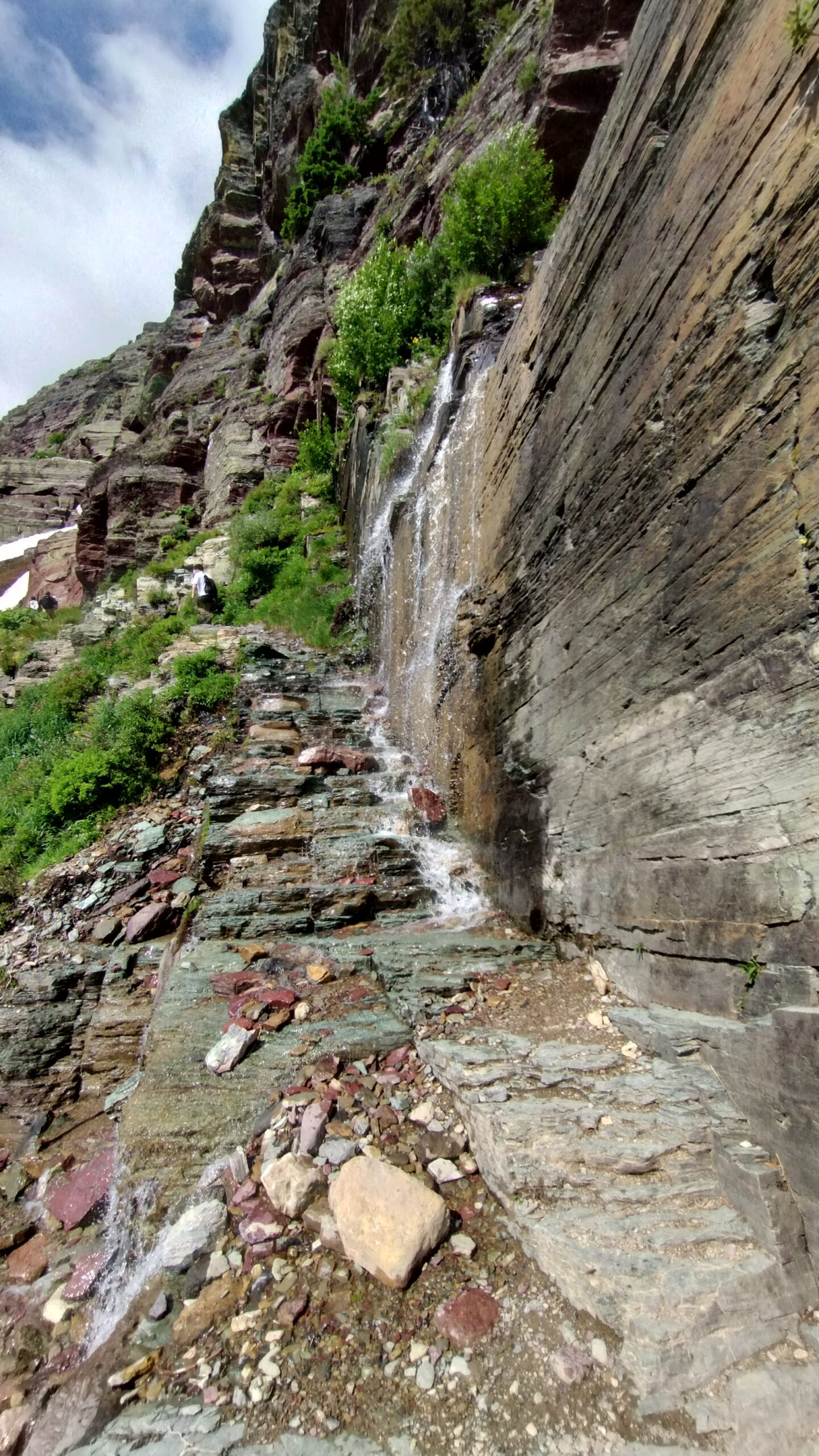
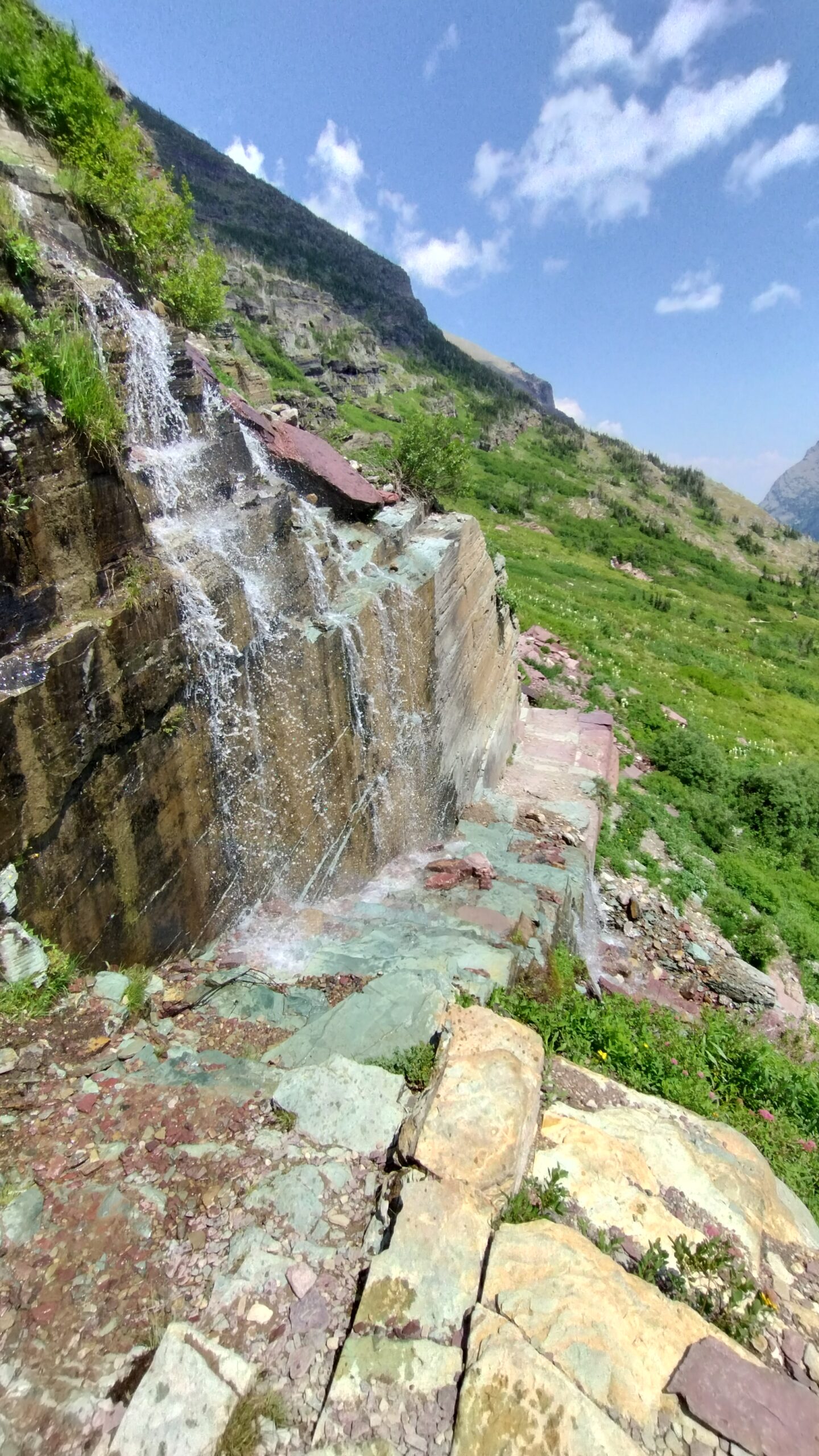
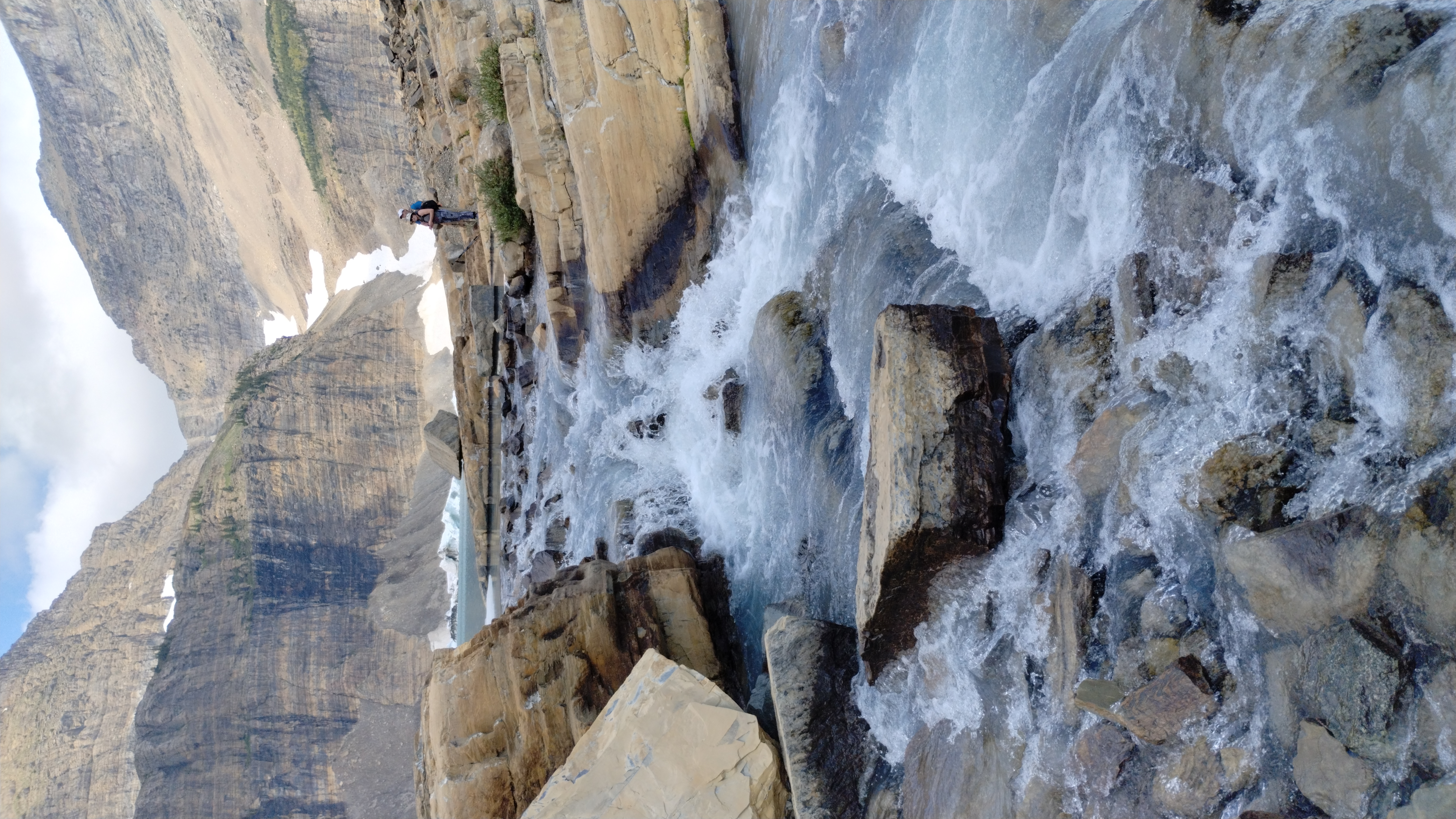
You and the trail are climbing all the while (and kind of relentlessly to be honest), and ascending towards the clouds, which feel so reachable in how they just crest and whisk over the mountain peaks. It feels like you’ve reached the great firmament of the entire world, and that you are seeing the mist of the great surrounding waterfall at the edge of the world curl back over the ramparts, beckoning you to their view.
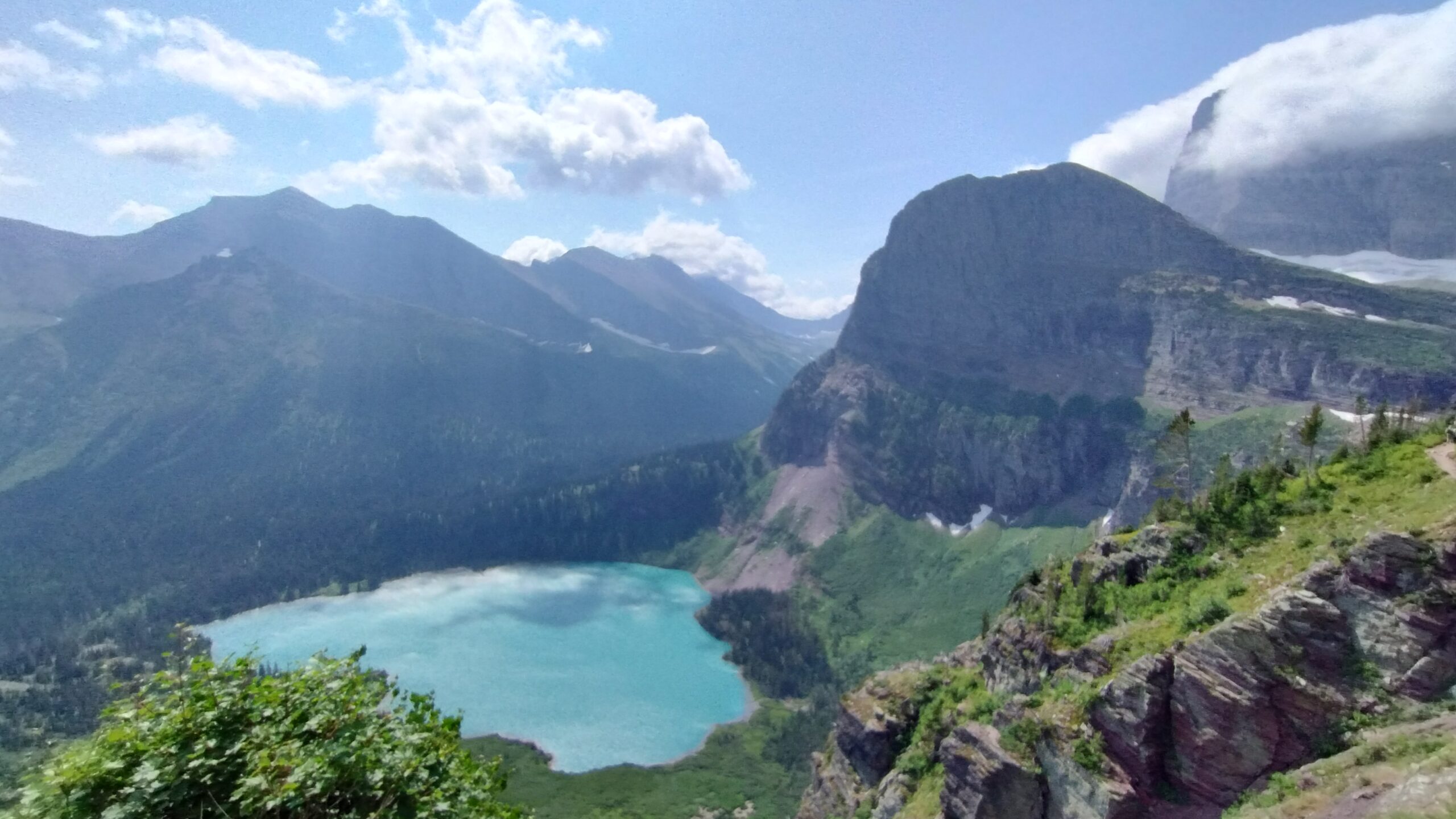
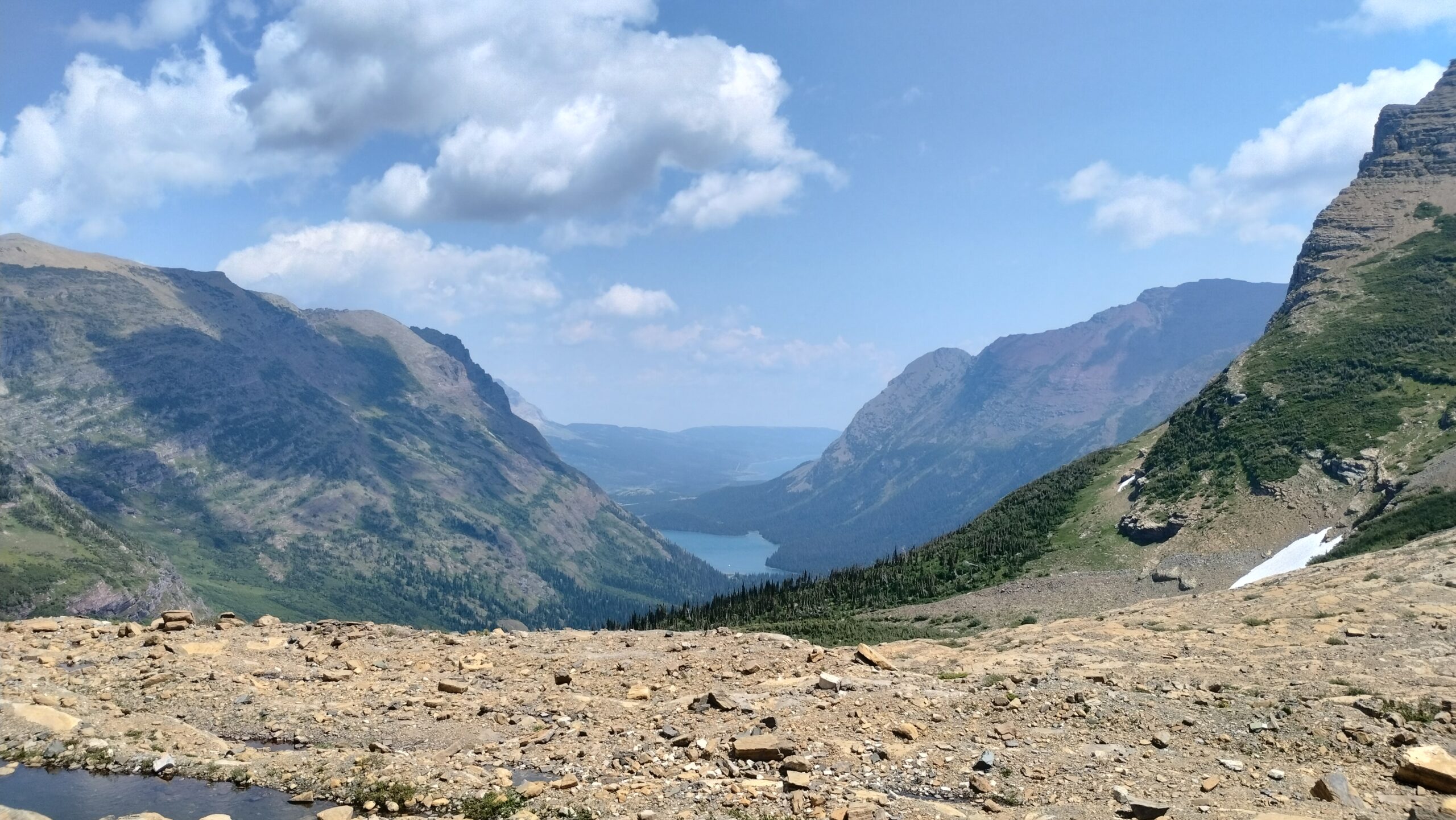
And what lies at the end? High in the bosom of the mountains is the great heart of the hike, Grinnell Lake:

In the above photo: Gem Glacier in the notch on the ridgeline in the upper left third of the photo, Salamander Glacier in the upper center below the ridgeline, and Grinnell Glacier on the shore of the lake in the left-center of the pic.
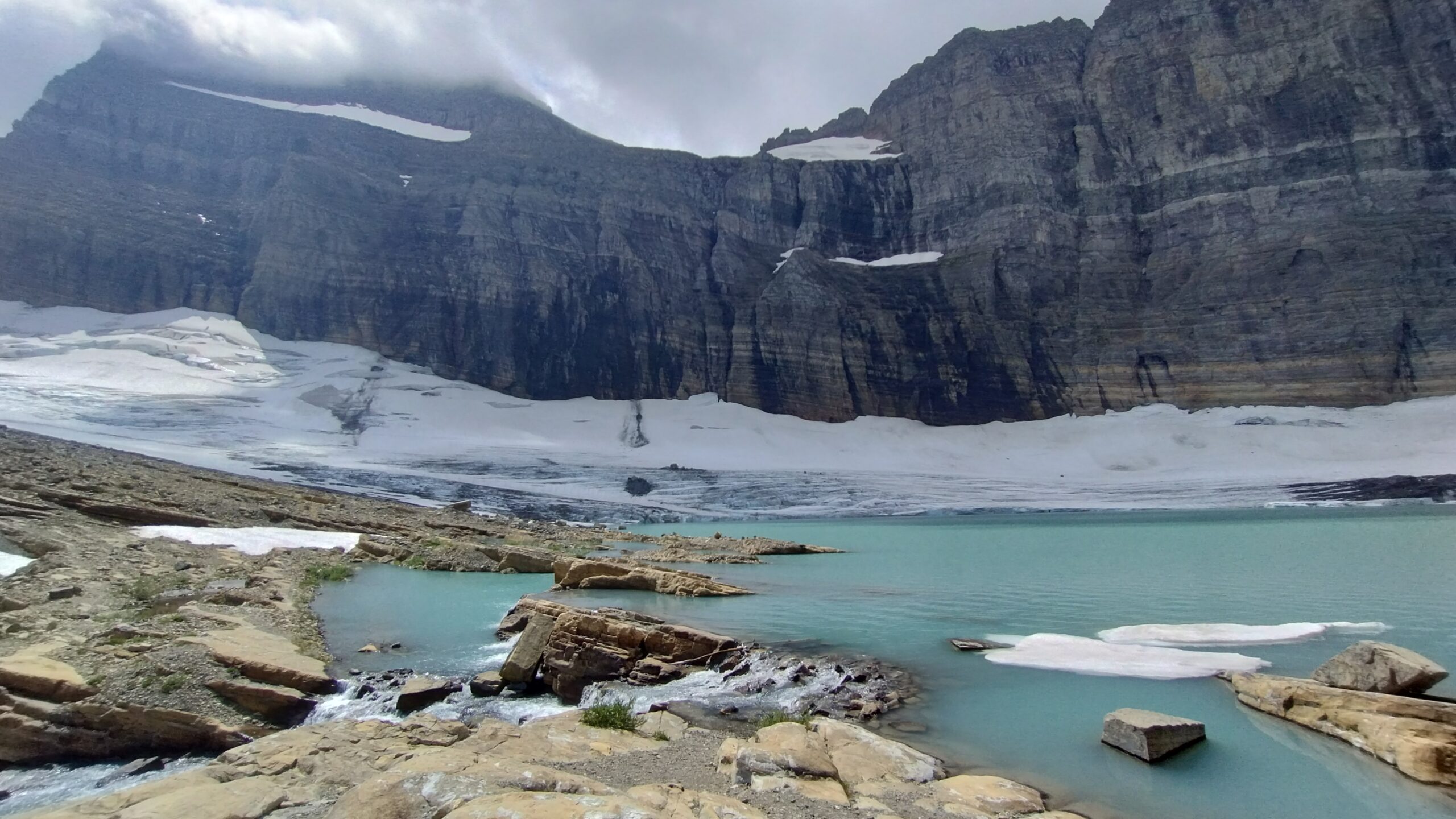
A closer view of Grinnell Glacier at the southern end of the lake.
Grinnell Lake and the Glaciers surrounding it feel like the great, frozen heart of a giant. It is the absolute core of a wilderness so alive with plants and animals and peoples, and alive in the wind and the clouds and the waters, but so absolutely still. You watch the water and how unperturbed it is by wind or wave and you feel like you are waiting for a great heart to suddenly beat and heave itself out of the breast of the Earth. I waited for it. I dunked my hands in the freezing water and waited for the lake heart to heave up into me and beat in time with mine. But her obstinance is greater than mine; the cold meant I couldn’t wait long enough to hear the giant heart awaken.
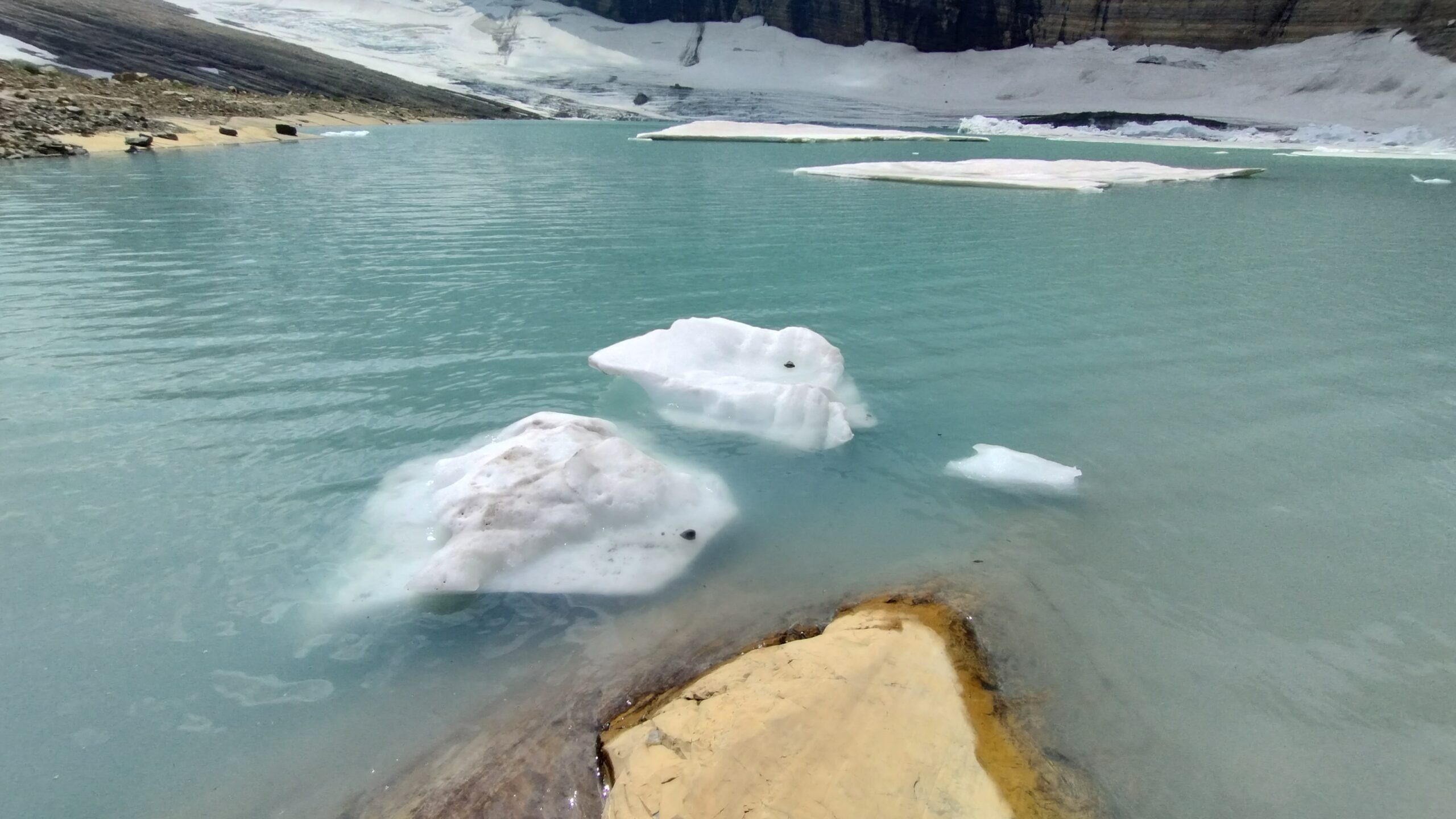
Grinnell Lake is flecked with baby glaciers and ice flows that break off from the main ones. The ice usually doesn’t go out on the lake entirely until August, and this year may not go out at all due to the heavy snowfalls bolstering the pack ice somewhat.

The Grinnell Lake outflow, draining down not to the Atlantic or the Pacific, but the Arctic Ocean (via the St. Mary, Oldman, Saskatchewan, and Nelson Rivers to Hudson’s Bay).
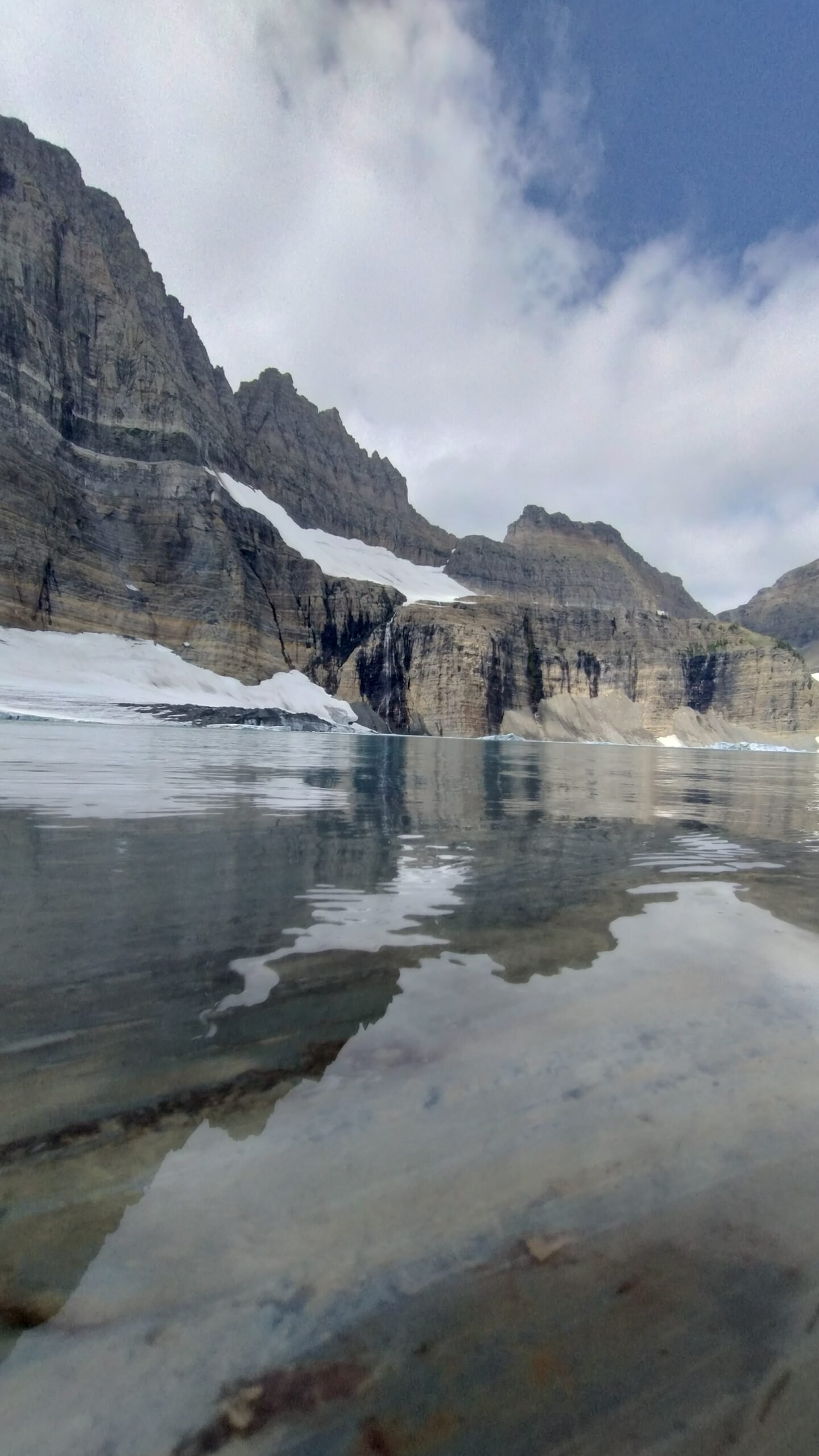
Still waters on a faraway shore.
I wanted to jump in the lake, but on that particular day the University of Montana had a crew of researchers out in a rubber boat doing science in the lake:
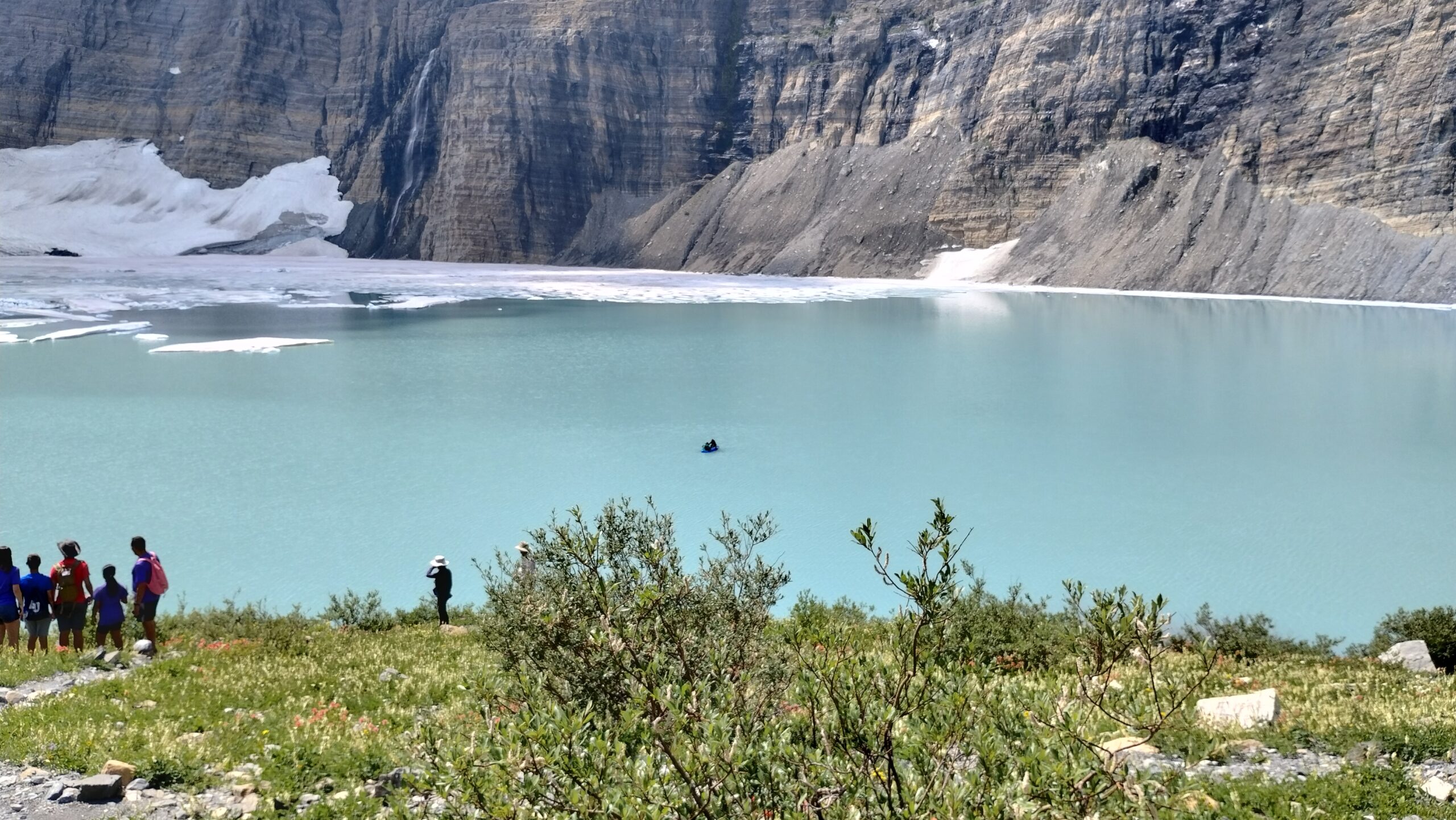
Can you see them?
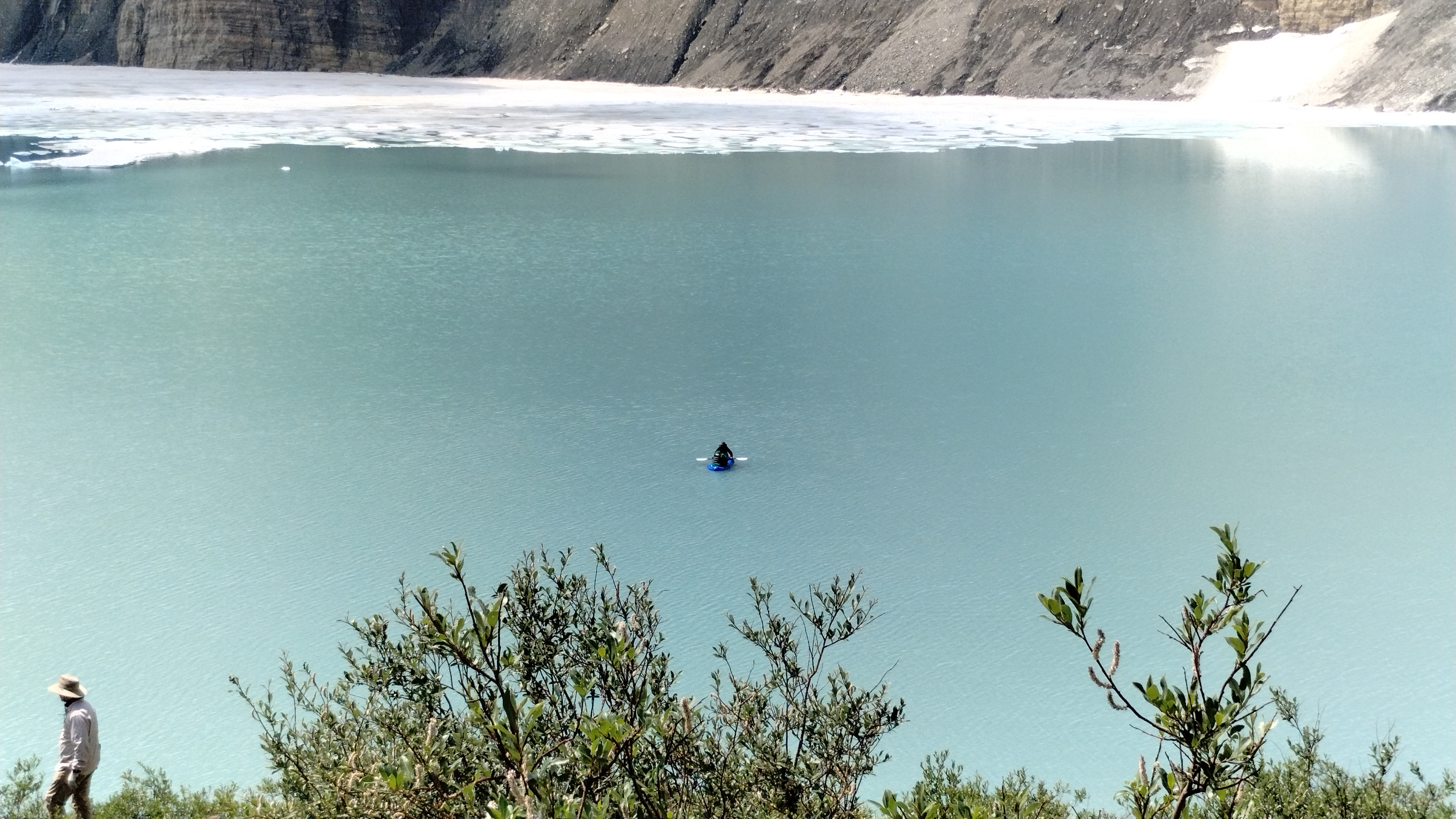
They’re the tiiiiiiny blue boat in the the middle of the photo.
We were advised not to get in the water as it could interfere with the water quality samples the research team was taking. Apparently they only do this survey twice per year, so it was genuinely cool and lucky that we got to see them out on the lake like this. I can’t imagine which one of them drew the short straw and had to haul the rubber boat all the way up here!
There is one way to enjoy the lake though without getting in it:
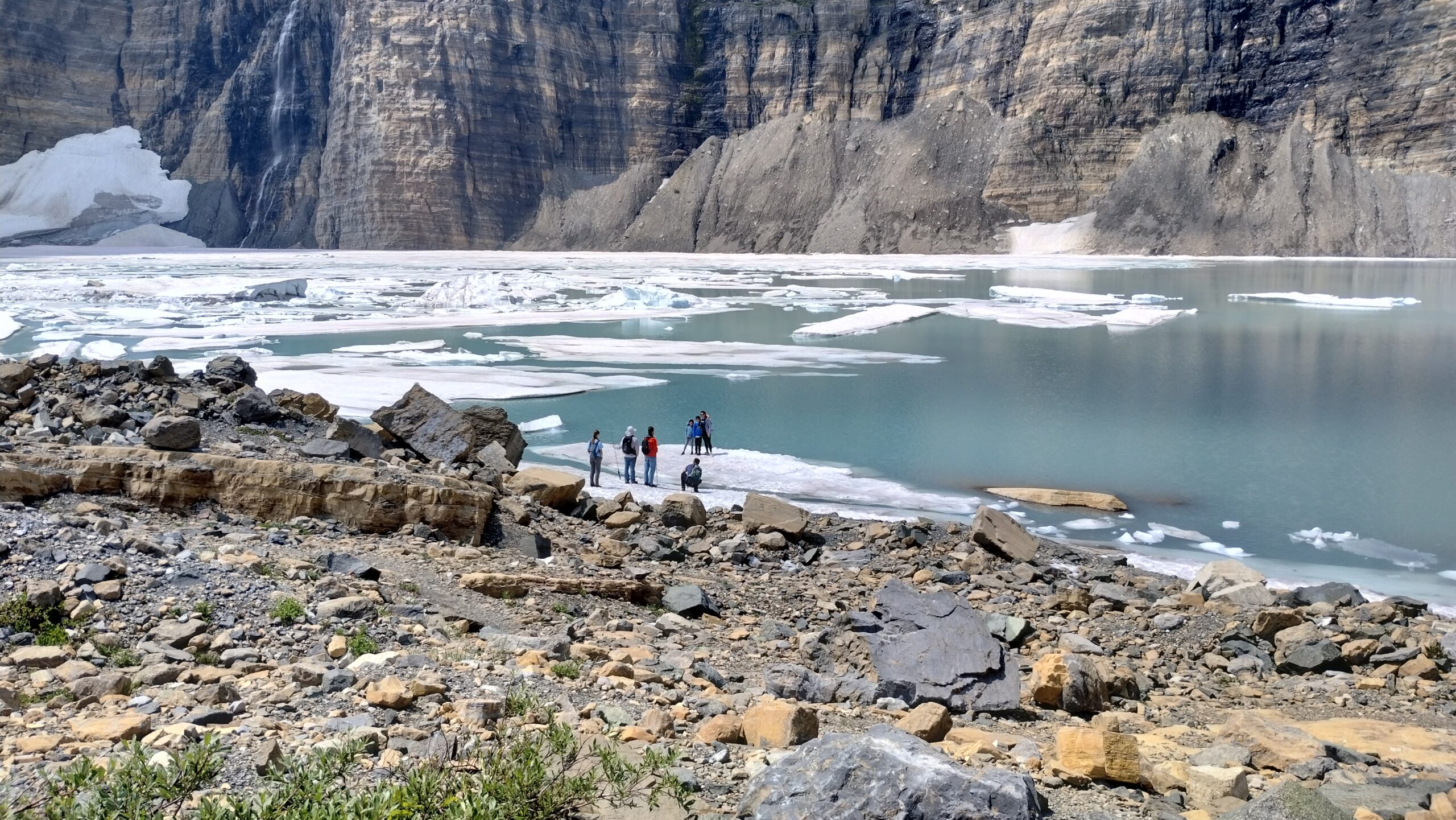
This is because the lake is covered in ice flows/icebergs, which you can jump on if you’re daring (and if they’re close enough to shore).
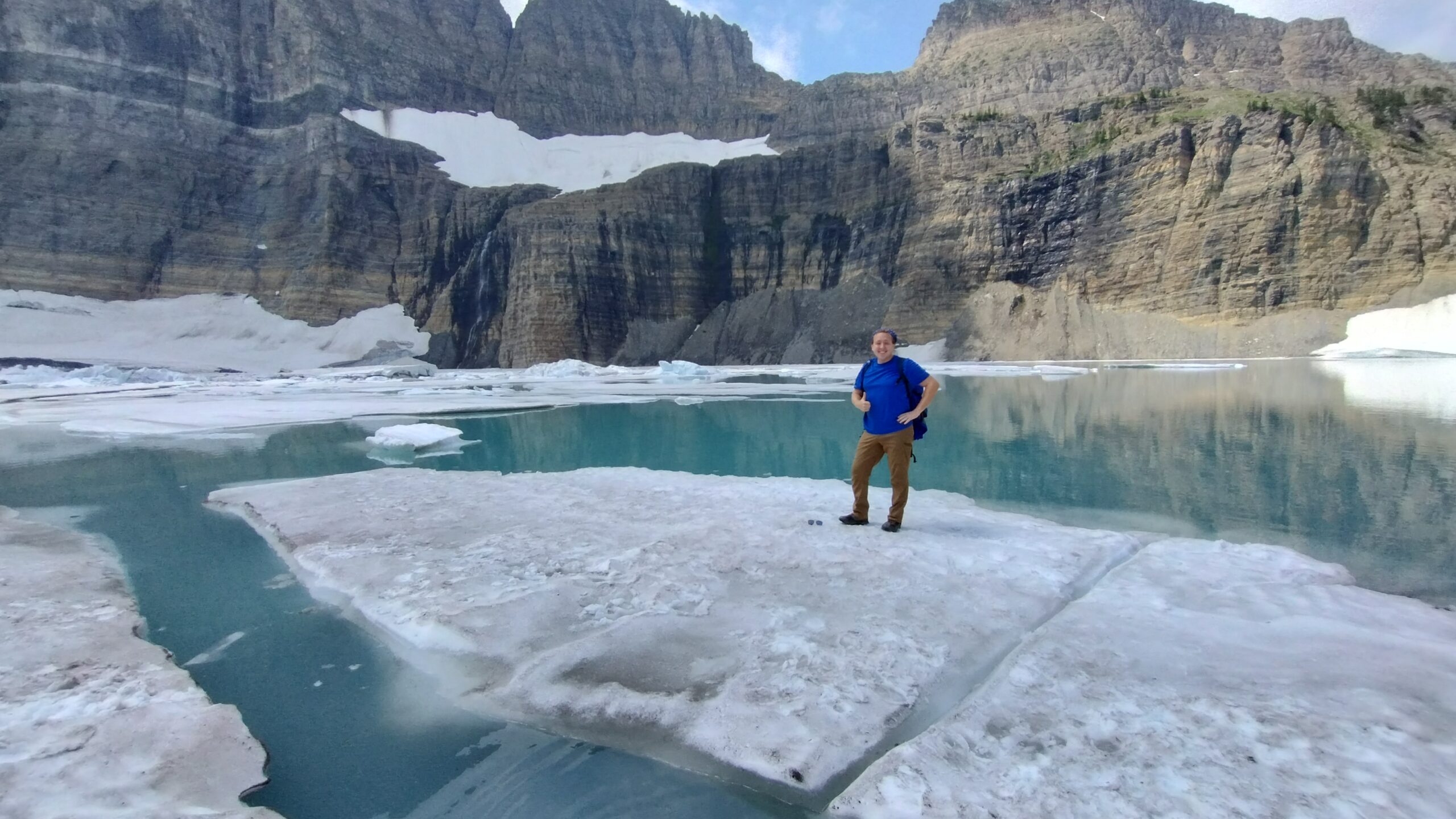
I know I did!
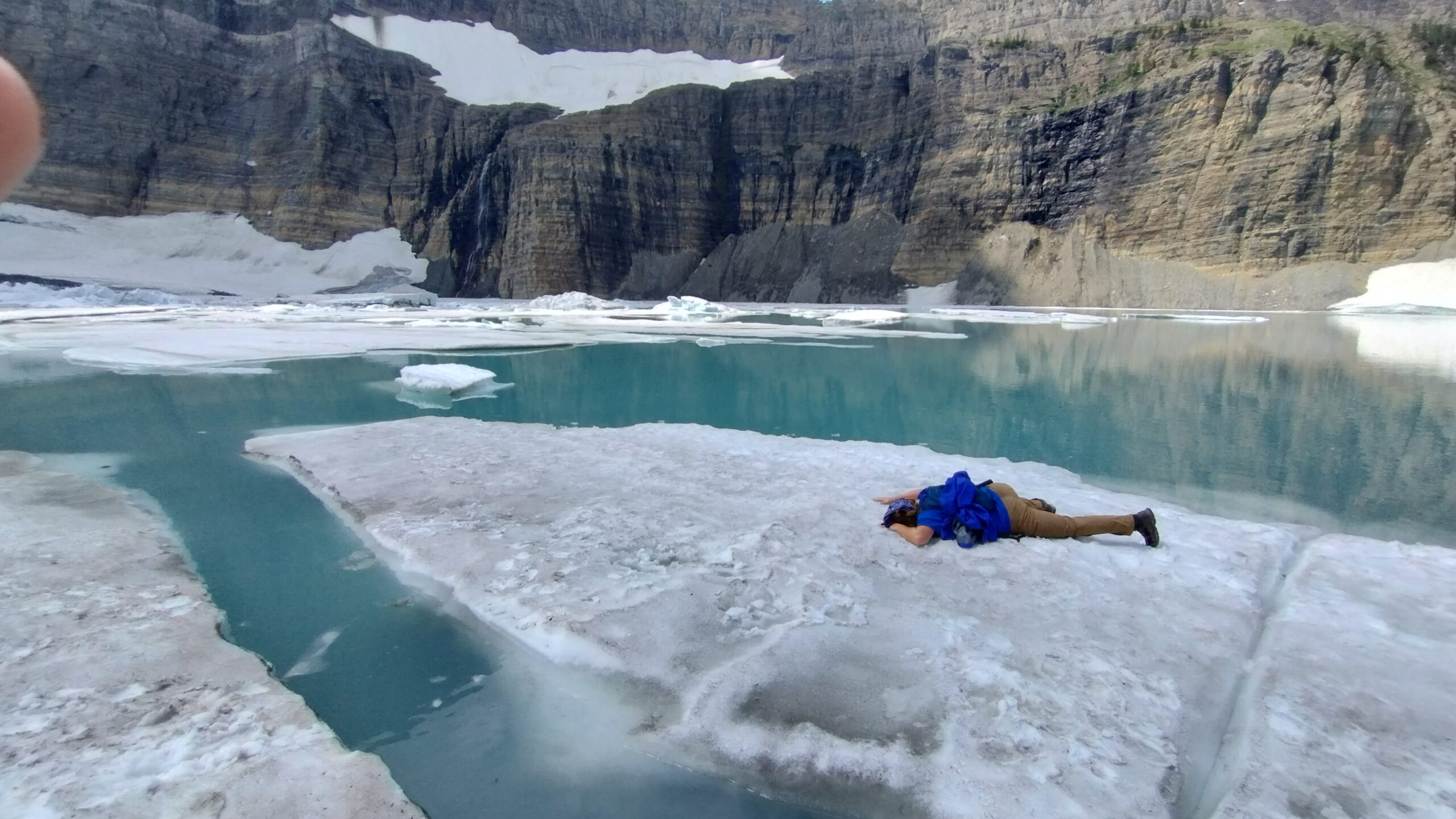
I have literally one joke.
All around the lake too, there were these strange and tiny ponds that were extremely red in color:
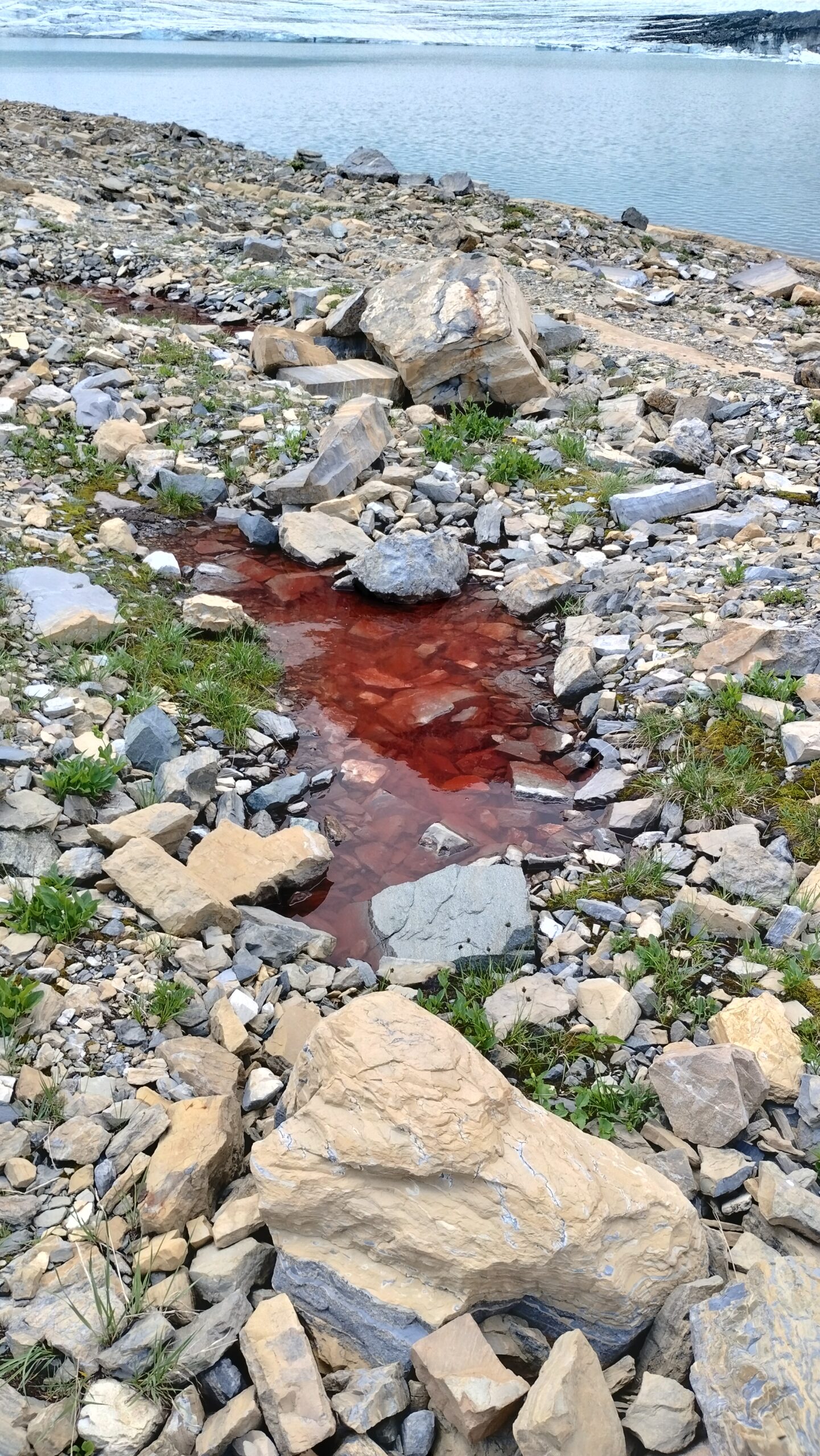
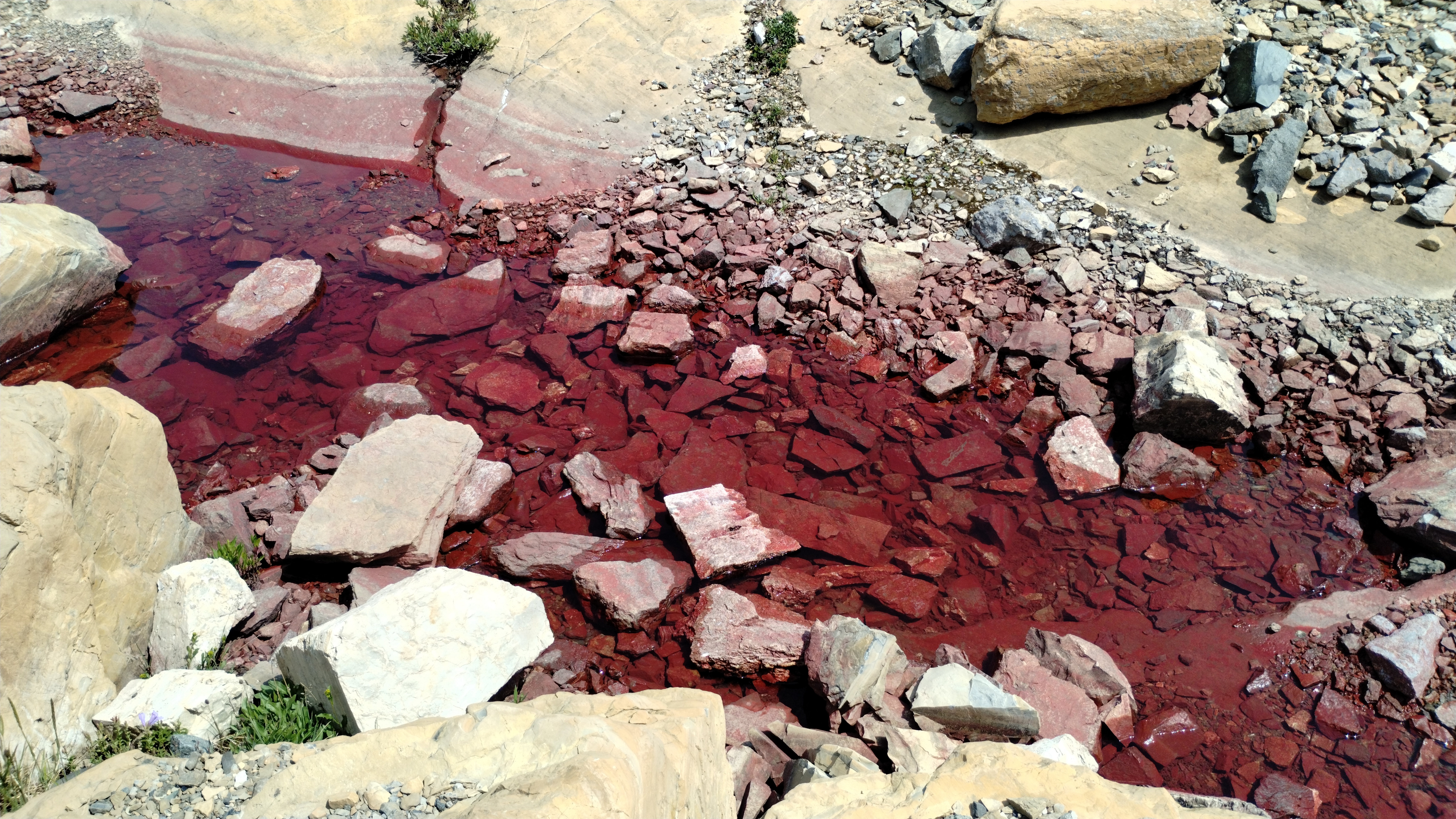
A ranger explained to me that this is due to a certain kind of bacteria native to these small, glacial ponds. The bacteria are toxic to humans and can’t be filtered out of the water apparently, so I didn’t mess with any of these ponds. But the stand in stark and unique contrast to the deep, deep turquois color of Grinnell Lake. Grinnell, and other lakes in Glacier, get their color from the super fine glacial till that washes out from underneath the glaciers and into the lakes.
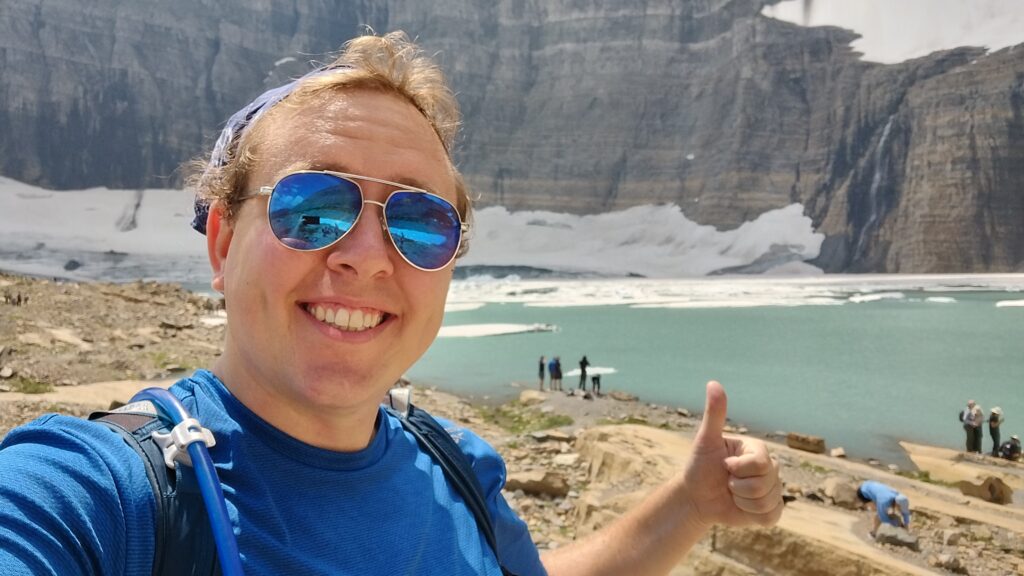
And I found them all very beautiful 🙂
I spent a long while at the lake, before finally hiking back down. But my adventures in Glacier weren’t over yet, and neither are my blog posts about it, so stay tuned! There’s just too many pictures to add into all these posts without it becoming unwieldly, so I’ll be posting several more updates in the coming days. I hope you all enjoy them!
That’s all for now,
Stay well everyone,
Evan 💙